iOS vs Android App Development for a New Product Launch

IT copywriter
Reading time:
73% of all smartphones worldwide are Android devices, but the iOS platform still generates more revenue for app publishers. Consumers spend more in the App Store than in Google Play and all alternative Android markets together. By looking solely at the amount of money users spend in stores, publishers may think that building Android apps makes no sense at all. Of course, that’s not true. The thing is that you need to have a deep understanding of what you are doing and who will appreciate your efforts.
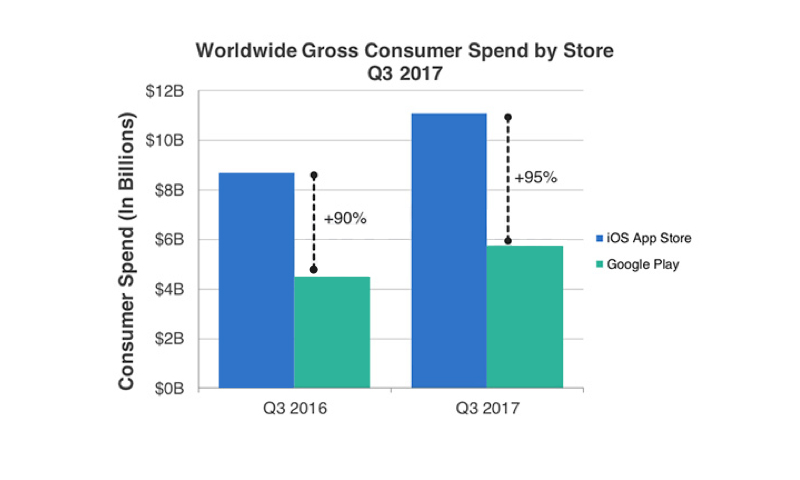
iOS vs Android App Development: Target market
Collect as much information about your target audience, as possible. Analyze location, demographics, behavior, income level. Develop your buyer personas to build something of great demand.
Android prevails in developing economies like Asia, Africa, and South America. On the contrary, Europe, Australasia, and the U.S. are dominated by iOS. In States, by the way, this dominance is quite subtle.
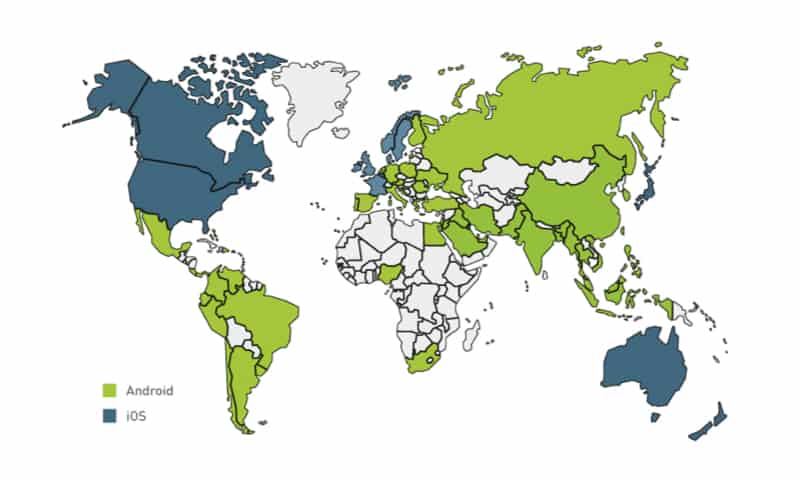
Age also matters. Younger people are more likely to have Android devices due to the lower price.
Android is not the king in the tablet world anymore, just a runner-up. The average iPad app session length is way longer, with users more willing to pay for the apps they use.
Choose Android to enter the emerging markets or to address younger people and kids.
Choose iOS to target people in the U.S., Australasia, or Europe with an upper household income. Focusing on tablets also makes iOS development a reasonable option.
For Ezuza we built a payment mobile app, that addresses the challenges of underbanked and young people in Mexico. The app enables those who can’t or doesn’t want to use banks to pay bills and make P2P transactions. Due to the income level and other reasons, iOS devices were not popular among the target audience. Hence, there was no surprise in choosing an Android app for a new product launch.
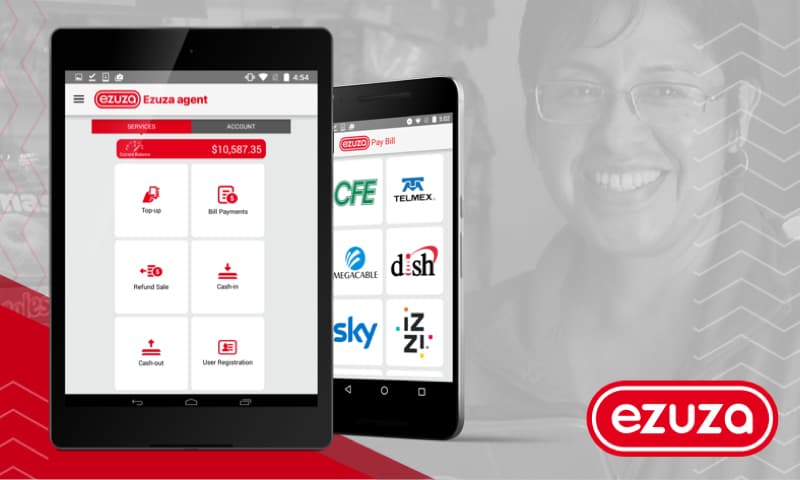
iOS vs Android App Development: Production and release
iOS and Android are different in the way applications are built and published. Weigh all pros and cons of both approaches. Neither of them is perfect but you can always choose the best option.
Android is a versatile platform. However, this is not solely a boon, but also a bane for all Android developers. Developing for Android means developing for a jillion devices, screens, and OSes.
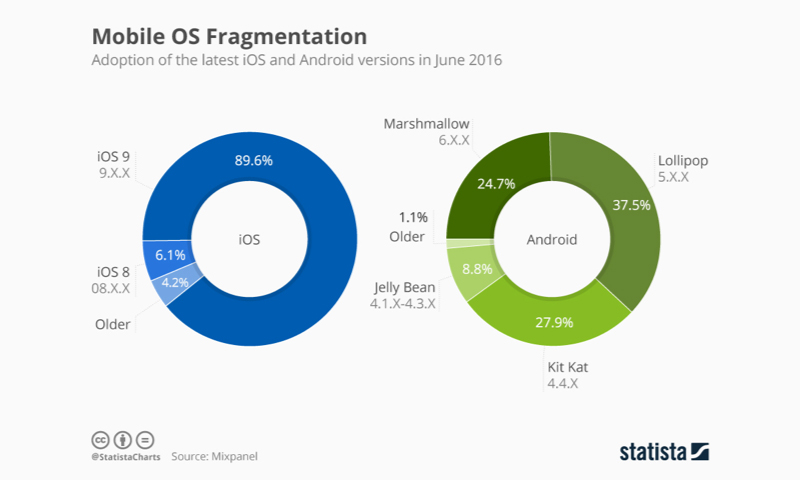
Things haven’t changed much since 2016. About 85% of iOS users tend to upgrade to the latest OS version. On the other hand, less than 40 percent of Android users are on Lollipop which was first released in June 2014.
The iOS platform is more developer-friendly. Devices are not countless and they are upgraded to the latest OS version consistently. It all leads to better user reviews and makes iOS development cost less than Android.
Apple is much more stringent about the publishing process. Not only will they check your build manually, but will also make you wait for a couple of days with a good chance of your app being rejected. The more controversial your app mechanics are, the higher the chances are to fail the review. Apple is also serious about legal questions so make sure your app is legitimate to use and distribute.
Year to year Apple is trying to be more publisher-friendly. Now they’ve reduced the review time to as little as 1 day. And this is much better than 10 days, a time an iOS app approval could possibly take a couple of years ago.
That being said, Google Play is still a better place to get your build released and test an MVP. Also, Google has a special app store for beta testing.
Choose Android to experiment with app mechanics or to quickly test an MVP without being rejected. Android is also perfect to build apps for Smart TV, media streaming devices, wearables, and in-car navigation systems.
Choose iOS to accelerate the development slightly and to get higher user reviews. A good fit to target and engage creditworthy Apple-lovers.
For our long-term client Creative Construction, we built Hidence — a conference networking application. The project started as an iOS app to speed things up and address Apple users first. When it became clear that the app is promising, an Android development was started up to increase the audience reach.
When it became clear that the app is promising, an Android development was started up to increase the audience reach.
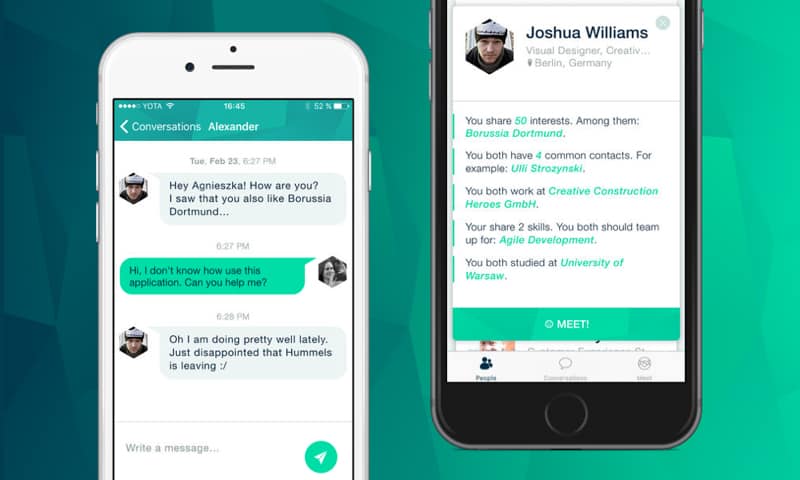
iOS vs Android: Monetization strategy
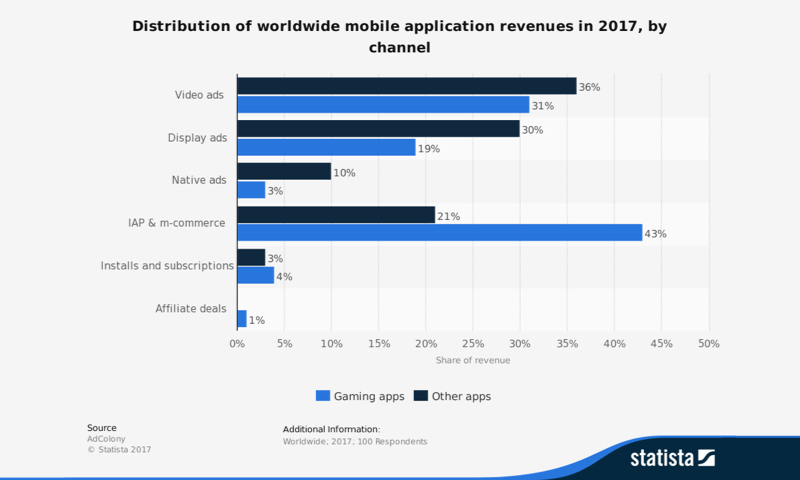
Considering your monetization strategy before the development phase is a must.
Apple and Google have opposite monetization models. While the App Store is well-known for its high-quality apps that you need to pay for to install, Google Play is all about in-app ads.
As can be clearly seen on the graph, mobile ads generate much more revenue than paid app downloads. That is the reason why Google Play will reportedly top the App Store in-app revenue this year.
Nevertheless, the average iOS user has a much higher LTV than an Android user does. According to Android Authority, iOS users spend nearly 2.5 times more on in-app purchases than Android users, meaning $1.08 vs. $0.43 per user. Moreover, iOS users are 50% more likely to make in-app purchases. And average purchasing amount of iOS and Android users is $12.77 vs. $6.19.
In other words, it is much more profitable to start with iOS in terms of instant ROI. Android app owners are more likely to rely on a broad audience reach and in-app ads.
Choose Android to launch a free app, address a wider audience, and get the most out of ads later. But make sure to limit the number of ads for a better UX.
Choose iOS to build a paid-for app or add in-app purchases. But remember to provide enough value so picky iOS-lovers will download your app.
One of our German clients partnered with us to build an Android application with paid functionality and the ability to upload custom content. After a while, it became clear that iOS users are more likely to make in-app purchases. That’s how our clients decided to jump-start an iOS development.
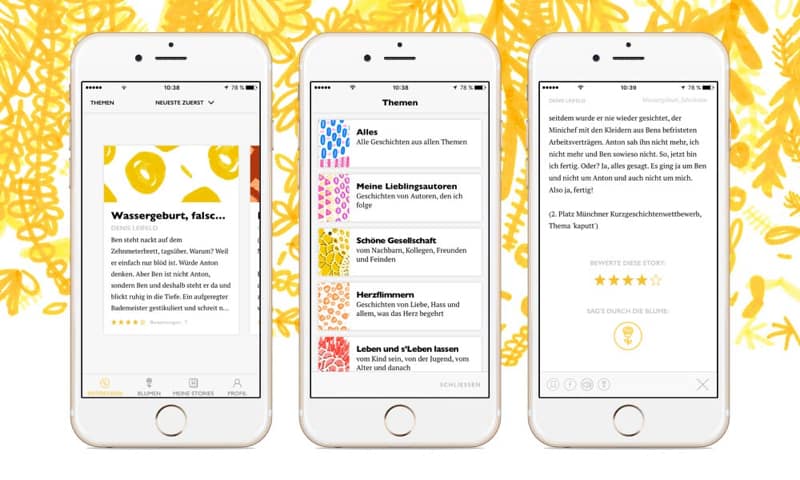
Summing up
All in all, relevance trumps revenue. No matter how much your audience is willing to pay, they won’t install your app if it doesn’t bring real value. So be sure to find out what people really want.
Remember, the best practice possible is to go for both iOS and Android to achieve the highest ROI combined with a wider audience reach. If it doesn’t work for your business, you can always do research and choose between iOS and Android application development.
This a short checklist for you to build the right app for a new product launch:
- Develop your buyer personas
- Examine the target market
- Plan your budget and timeline
- Select the monetization strategy

